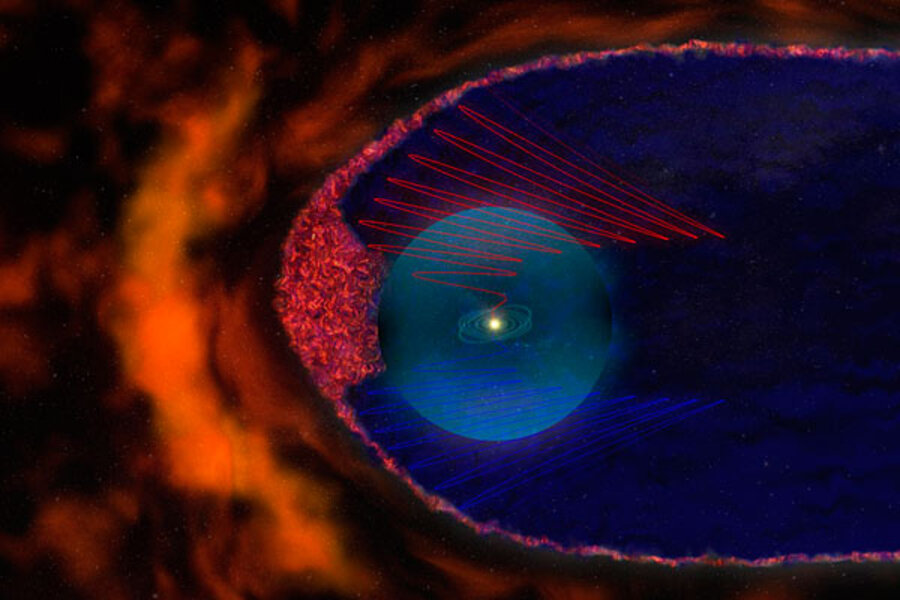Scientists intrigued by atoms from beyond the solar system
Loading...
A NASA satellite orbiting Earth has captured "aliens" from interstellar space – but with names like hydrogen, helium, oxygen, and neon, these are outsiders are actually quite welcome.
By snagging these different elements at the same time, NASA’s Interstellar Boundary Explorer (IBEX) is for the first time allowing astronomers to compare how elements are distributed in interstellar space versus within our own solar system.
The composition of interstellar space is of particular interest to scientists because stars seed it with a range of elements – including nitrogen, oxygen, iron – when they end their lives. Once part of the interstellar medium, these elements become the raw material available for recycling into new stars, as well as planets, plants, and animals.
The new data are already helping scientists gain a fuller understanding of the corner of the Milky Way in which our solar system currently finds itself.
IBEX is designed to study the boundary between interstellar space and the heliosphere – the region of space influenced by the charged particles of the solar wind and the sun's magnetic field. Cosmic radiation, which consists of charged particles, is mostly deflected by the heliosphere. But neutral atoms, which carry no electrical charge, can penetrate the sun’s protective shield. Tuesday’s IBEX report focuses on these neutral atoms.
IBEX's sampling of neutral atoms has revealed intriguing differences in composition between the material in the solar system and in the interstellar cloud the solar system is passing through. IBEX found that for every 20 neon atoms reaching its detectors from the interstellar medium, it also was detecting 74 oxygen atoms. The solar system is richer in oxygen, with 111 oxygen atoms for each 20 neon atoms.
That points to two possibilities, says David McComas, a researcher at the Southwest Research Institute in San Antonio, and the mission's lead scientist. Either the sun formed in a different part of the interstellar cloud it now occupies, where oxygen was more plentiful, or the missing oxygen is cradled in dust and ice in the cloud.
If the differences are intriguing now, wait another 100 to 3,000 years or so. That's when the solar system is expected to exit the cloud it's now crossing into far different surroundings, the IBEX researchers say.
In its current surroundings, the solar system is encountering a weaker interstellar headwind than previous estimates suggested, the IBEX team reports. Measurements from the European Space Agency's now-defunct Ulysses solar observatory indicated that helium was entering the solar system at 59,000 miles an hour. IBEX's more-precise measurements put the speed at 52,000 miles an hour.
This reduction in speed means that the heliosphere sports a different shape than previously estimated, notes Dr. McComas. Currently, that is most important to modelers trying to map the various forces at play in the solar system.
“Frankly, all the modelers now have to go back and try to get their models to work with a very different balance” between the pressure the heliosphere is encountering from the headwind and the interplay between the heliosphere's magnetic field and the galactic magnetic field, he says. Both affect the shape of the heliosphere.
Understanding the shape of the heliosphere could be more broadly important if the solar system heads into quarters of the galaxy with much greater headwinds. In principle, those headwinds could push the leading edge of the heliosphere closer to the sun – to the point that some planets could spend part of their orbit outside the sun’s protective envelope.
The IBEX results appear in a special February supplement to the Astrophysical Journal.







